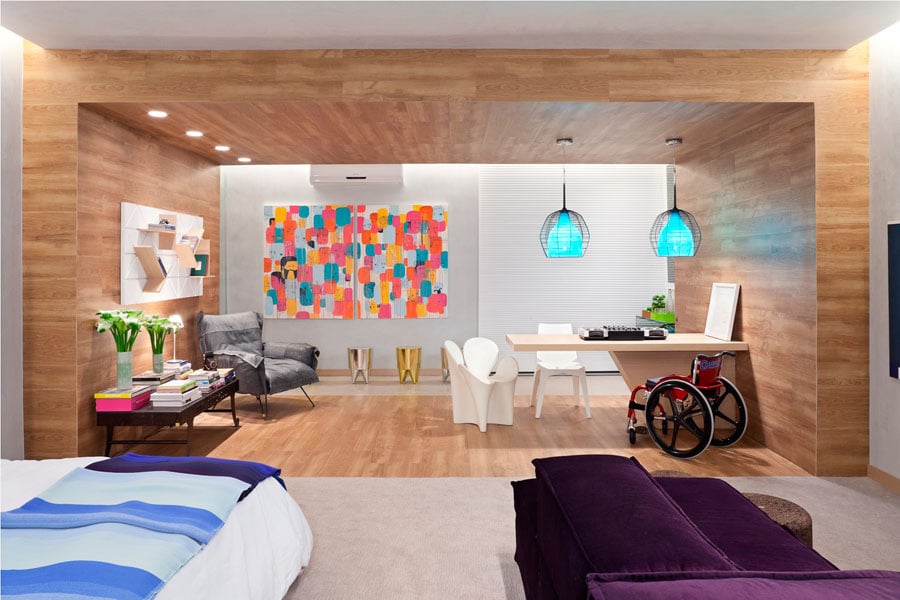 According to an annual survey conducted by the US Census Bureau, people with disabilities make up 12.8% of the US population. This percentage is likely to grow as the US population ages, since the older people get, the higher the rate of disability increases. Still, even with physical limitations affecting such a large part of the population, most existing and new housing structures lack the basic accessibility features differently abled people require. That is, of course, unless the current occupant has a disability.
According to an annual survey conducted by the US Census Bureau, people with disabilities make up 12.8% of the US population. This percentage is likely to grow as the US population ages, since the older people get, the higher the rate of disability increases. Still, even with physical limitations affecting such a large part of the population, most existing and new housing structures lack the basic accessibility features differently abled people require. That is, of course, unless the current occupant has a disability.
An accessible home is one that enables all its occupants to do what they need to do as independently as possible. Accessibility is achieved not only through architectural design but also through integrating specific features, particularly in bathrooms and along stairways. There are many ways that you can make your home more accessible. Here are just some of them.
Yard
To enter a house, one may have to go through the yard. You can make your yard more accessible by installing paths with a firm and level surface so that wheelchair users can go on them without any problem. Installing a ramp is a good way to make your entrance accessible to those in wheelchairs. Don’t forget to add handrails and curbs to prevent people from slipping or falling from the ramp. If you cannot install a ramp, you should have a folding aluminum wheelchair ramp at the ready.
Interiors
Having an accessible interior means having clear paths of travel throughout your home. It is vital that you have doors that are at least 32 inches wide and that your threshold is rounded and is no more than one-half inch higher than the floor. Having a high threshold is difficult not only for people who use wheelchairs but also for those who use canes and walkers. In addition, your hallways should be at least 36 inches wide to accommodate wheelchair users.
One potential limitation to think about is your flooring. Plush carpeting may not be such a good idea for wheelchair users. According to the Americans with Disabilities Act Standards for Accessible Design, the carpet pile shouldn’t be more than one-half-inch thick so that they don’t get stuck in the wheelchair’s wheels. Throw rugs, which can shift position, are not recommended, as these can get caught in the wheels and also present trip and fall hazards.
Bathrooms
One way to make your bathroom accessible is by replacing your bathtub with a shower since showers can be used by those in wheelchairs and those with limited mobility, alike. You can even install a shower seat and a hand-held shower head for extra versatility. For added stability, it is a good idea to install grab bars in proximity to the shower and toilet.
A taller toilet is more accessible to those with limited mobility. Don’t forget to leave enough room around the toilet and sink for the wheelchair.
If you’re looking to make your home more accessible and friendlier to differently-abled people, then turn to none other than 1800wheelchair.com. We have wheelchairs, and walkers, among others, that will help you or your loved ones address your mobility needs. Also check out our fantastic resource on wheelchair accessibility in you home here as well.
Don’t hesitate to get in touch with us today for more information. We would love to hear from you.